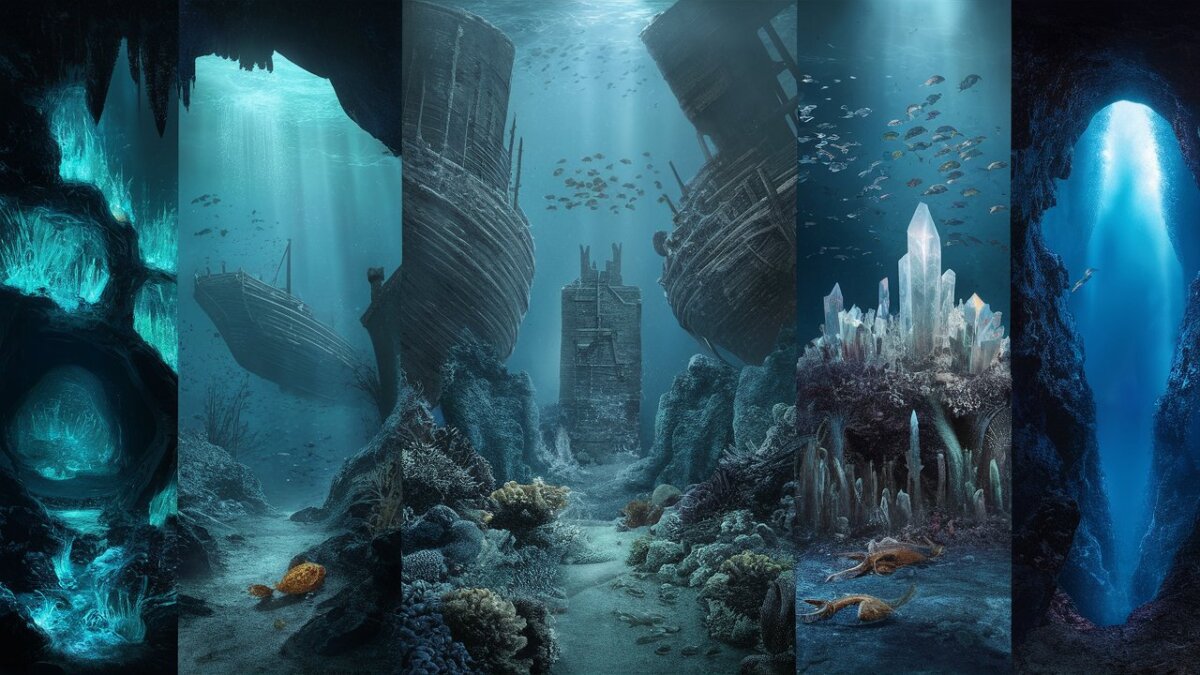Explore “The Top 5 Secrets the Ocean’s Depths Hold” and delve into the enigmatic realm that lies beneath the ocean’s surface.
Under the surface illuminated by sunlight is a place full of mystery and awe, where the deep blue expanse protects nature’s most precious secrets.
In this blog, we’ll embark on a quest to unearth the marvels and hidden riches that lie beneath, from undiscovered species to age-old riddles.
Join us as we explore the unexplored oceanic regions, where every mystery reveals a piece of the complex jigsaw that is Earth. We’re going to share all the untold stories that the ocean’s depths have to offer.

you may also like this: Explore the Thrills of the Most Dangerous Aquarium
An Overview of the Enigmatic Ocean Depths
The deep depths are a place of wonder and mystery located under the glistening surface of the world’s seas.
These vast, shadowy regions, which make up over 70% of Earth’s surface, are the hiding place of countless mysteries just waiting to be discovered.
In this investigation, we delve into the mysterious realm beneath the seas, where sunlight disappears and pressure rises to unfathomable heights.
The ocean’s depths are divided into many zones, each with its own distinct population and set of difficulties.
Only the highest layers of the ocean are illuminated by sunlight, leaving the great majority of it permanently black.
Nevertheless, life continues in these harsh environments, having evolved to withstand the intense strains and limited supplies.
The deep’s inhabitants, ranging from the elusive giant squid to the captivating anglerfish with its glowing lure, have developed remarkable adaptations to endure in this hostile habitat.
In an effort to discover the mysteries concealed in the depths of the ocean, scientists are constantly pushing the frontiers of exploration.
Researchers may now explore depths that were previously unreachable by humans because of cutting-edge technologies like autonomous underwater vehicles (AUVs) and remotely operated vehicles (ROVs).
Findings in these far-flung areas shed light on Earth’s geological processes, in addition to advancing our knowledge of marine biology.
On the other hand, very little is known about the ocean’s depths, and much of its mystery is still unknown.
As we set out on our expedition into the deep, we peel back the layers of the ocean’s mysteries to uncover a world that sparks the imagination and emphasizes how critical it is to protect these enigmatic depths for future generations.
Join us as we venture into the depths of the unknown, where the secrets of the ocean still entice investigation and learning.
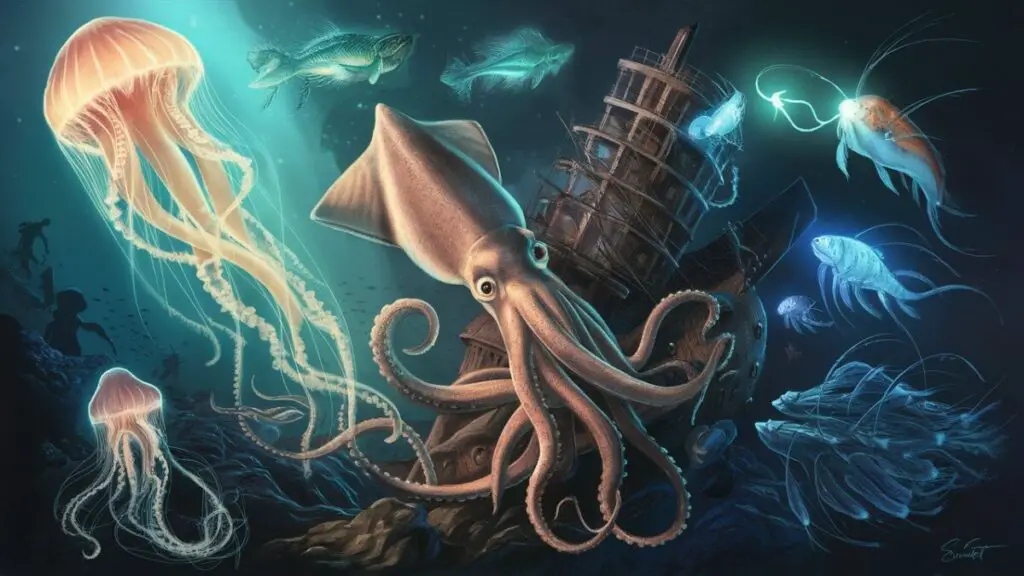
The Mysterious Animals of the Abyss
The world’s seas conceal a mysterious, largely unexplored region beneath their surface.
Abyssal depths are home to a multitude of unique and fascinating animals in this mysterious realm of crushing forces and limited light.
The anglerfish, a fish with a glowing lure that dangles in front of its mouth like a living fishing rod, is one such marvel.
This bioluminescent adaptation demonstrates the brilliant methods by which abyssal creatures have evolved to survive in their harsh habitat.
Another abyssal creature, the fangtooth, cannot close its mouth due to its massive needle-like teeth.
These adaptations demonstrate the unusual survival strategies these organisms have developed to withstand a food-poor and relentlessly predatory environment.
The gulper eel, which can eat food significantly larger than itself by opening its jaw to an incredible extent, also inhabits the abyss. It’s an ethereal and alien-looking animal.
In a setting where meals may be scarce, the ability to eat a large number of meals in one swallow is an essential survival strategy.
These mysterious animals of the abyss bear witness to the flexibility and persistence of life in the harshest circumstances on Earth as we continue to investigate the secrets of the deep.
The amazing diversity we are learning about these fascinating animals and the secret depths of our seas sparks curiosity and astonishment at the wonders that lie beneath the surface.
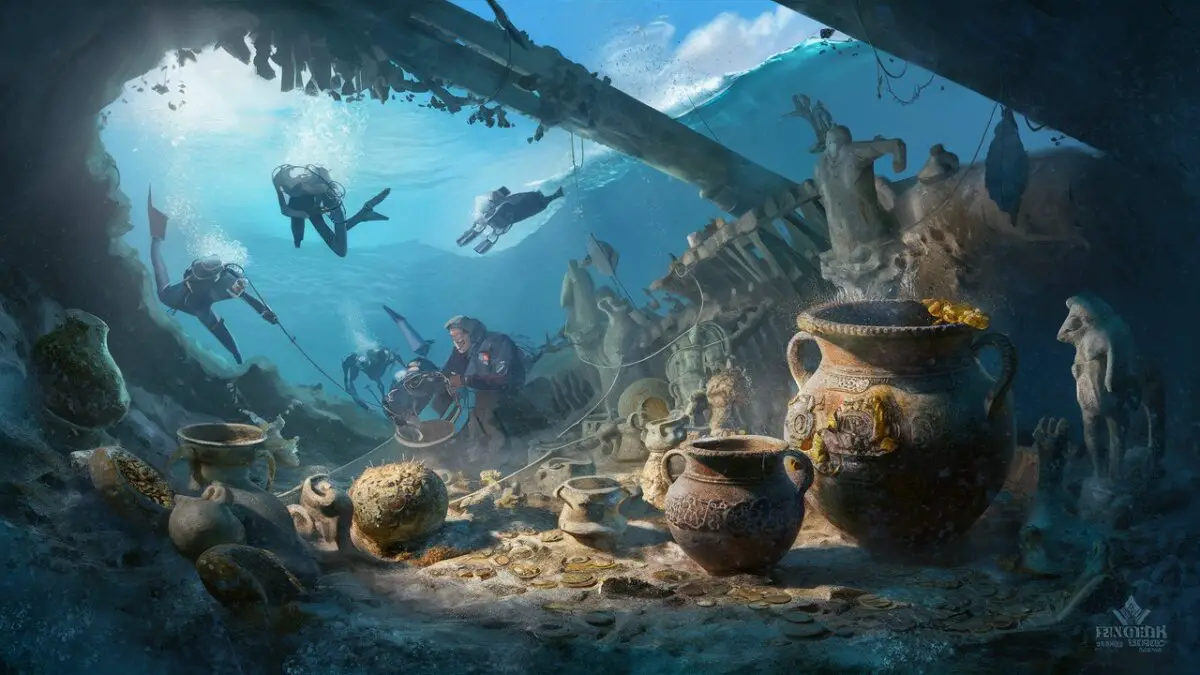
Revealing Submerged Archaeological Treasures
The world’s waters are home to hidden gems that tell stories of lost civilizations and nautical secrets under their glistening surface.
Underwater archaeology, an intriguing field that blends exploration and history, reveals a world of hidden treasures awaiting discovery.
For a very long time, the ocean’s depths have been home to shipwrecks and submerged towns preserved in time.
These underwater locations provide a singular glimpse into the past by conserving objects and buildings that convey historical narratives.
With cutting-edge equipment and a spirit of exploration, maritime archaeologists explore the depths to uncover these stories.
The ancient Greek city of Pavlopetri, located off the coast of southern Laconia, is one example of such a marvel.
This subterranean metropolis predates several well-known ancient civilizations by more than 3,000 years.
Its immaculately maintained courtyards, houses, and streets offer a window into Bronze Age society that challenges our conception of the past.
Furthermore, shipwrecks resemble time capsules eagerly awaiting discovery. The Antikythera wreck in the Aegean Sea contained the renowned Antikythera Mechanism, an antiquated analog computer.
This complex apparatus, which dates to the second century BCE, demonstrates the highly developed technological abilities of its designers.
Our capacity to investigate these underwater archeological treasures grows along with technological advancements.
This may also be of interest to you: Solving the Mysteries Behind Why Lakes Are Risky
Researchers can now explore large regions with never-before-seen detail thanks to underwater drones, 3D mapping, and remote sensing.
The secrets of the deep, once thought to be unsolvable, are gradually coming to light, rewriting the stories of our shared human past.
Underwater archaeology advances our understanding of past civilizations and emphasizes the importance of preserving these submerged time capsules for future generations through the quest for knowledge and preservation.
As we uncover new mysteries beneath the surface, the fascination of underwater archaeology endures, with the potential for even more amazing finds that will alter our perception of history and capture our imagination.
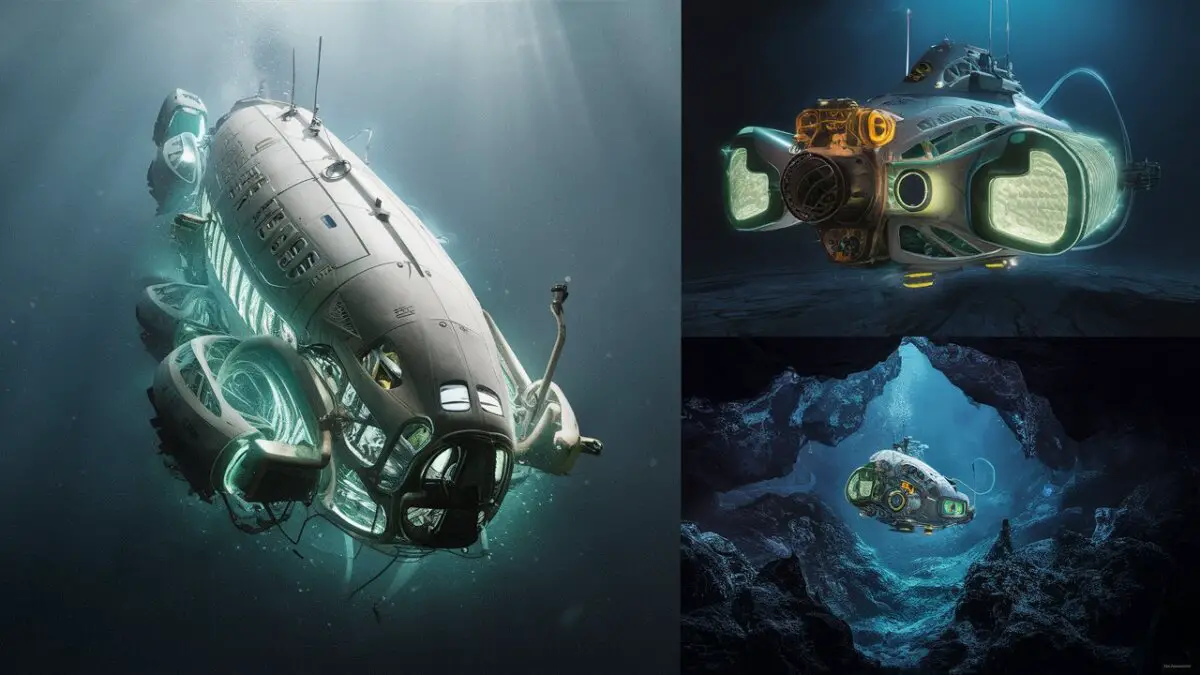
The Technologies of Deep-Sea Exploration: Their Secrets
Deploying to uncover the mysteries of deep water has always been a difficult undertaking that tests the limits of human resourcefulness and technology.
The mysteries that lie beneath the ocean’s surface have captivated scientists and explorers, leading to the advancement of state-of-the-art deep-sea exploration equipment.
Remotely operated vehicles (ROVs) are one of the main technological innovations transforming deep-sea research.
Researchers may explore the deep ocean without really being there with these robotic wonders’ sonar systems, high-definition cameras, and specialized instruments.
The Top 5 Secrets the Depths of the Ocean Keep
Remotely operated vehicles (ROVs) are essential for researching deep-sea ecosystems, undersea geology, and species discovery.
Deep-sea exploration is seeing a rise in the use of autonomous underwater vehicles (AUVs) in addition to robot underwater vehicles (ROVs).
These autonomous, untethered vehicles gather information on temperature, salinity, and marine life while performing predetermined tasks.
AUVs offer a more economical and effective way to survey large areas of the ocean bottom.
Another essential element of deep-sea exploration is satellite technology. Satellites equipped with advanced sensors enable scientists to track underwater currents, monitor changes in sea surface temperature, and identify potential areas of interest.
Deep-sea expedition planning and execution depend heavily on this real-time data.
These technologies are developing and expanding our comprehension of the ocean’s depths as we uncover its mysteries.
We can now explore the world’s most distant and harsh areas and uncover its hidden treasures because of the advancements in satellite technology, ROVs, and AUVs.
The continuous development of deep-sea research tools portends a day when human curiosity and technical ingenuity will no longer be able to hide the mysteries of the ocean’s depths.

The Amazing Things That Happen on the Ocean Floor
The ocean floor is one of the least understood environments on Earth, full of undiscovered treasures and cloaked in mystery.
The realm of incredible occurrences beneath the immense body of water captivates both scientists and adventurers.
The existence of hydrothermal vents is one of the ocean floor’s most fascinating characteristics. These underwater geysers create surreal vistas by ejecting hot, mineral-rich water.
Surprisingly, these vents support a unique ecosystem where life thrives in extreme conditions previously thought to be uninhabitable.
These vents are home to strange species that have evolved to the severe temperatures and darkness, testing our notion of what is possible in existence.
The ocean floor is also home to vast mountain ranges, including the massive underwater mountain chain known as the Mid-Atlantic Ridge, which stretches over the whole planet.
When tectonic plates diverge, a rift forms, allowing molten rock to rise and produce new crust, creating this geological marvel.
These undersea mountains are astounding in their sheer size and have a significant impact on the formation of the Earth’s surface.
Beyond these natural wonders, the ocean floor hides enigmatic tunnels that descend to unfathomable depths.
At a depth of more than 36,000 feet, the Mariana Trench is the deepest of them all.
Investigating these deep chasms exposes strange, alien-looking organisms that have evolved to withstand the intense pressure and never-ending darkness.
With the advancement of technology, we can also uncover the mysteries of the ocean floor.
The amazing occurrences that lie under the waves and stimulate our interest constantly remind us that there is much more to learn about the secrets concealed in the depths of our planet’s seas.

The Value of Biodiversity in the Deep Sea to Our Planet
One of the most important aspects of the biodiversity of our planet is the deep sea, a huge and enigmatic region that makes up over half of its surface.
Scientists are discovering the enormous significance of deep-sea ecosystems for the wellbeing of the entire planet, despite the fact that they are still completely unknown.
A multitude of rare species, many of which are only found in the deep sea, make up the biodiversity of this area of the planet.
The deep water is a hub of biological variety, home to strange animals adapted to high pressures and bioluminescent organisms that illuminate the abyssal darkness.
This variety contains unrealized possibilities for scientific and medical breakthroughs in addition to adding to the complex web of life in the ocean.
Furthermore, deep-sea ecosystems are essential for controlling the planet’s temperature. Carbon dioxide is massively sucked up by oceans, and a large portion of this greenhouse gas is stored in the deep sea due to its vastness and frigid temperatures.
Therefore, preserving deep-sea biodiversity is essential to preserving its ability to sequester carbon and lessening the effects of climate change.
Deep-sea mining, bottom trawling, and climate change are just a few of the extraordinary risks that human activity is posing to deep-sea habitats.
It is crucial that we give the deep sea’s protection top priority as we strive to solve its secrets.
We may strive toward sustainable practices that guarantee the health of these ecosystems and, by extension, the health of our entire planet by appreciating and comprehending the significance of deep-sea biodiversity.
you may also like this: My first trip by water | What does it look like?
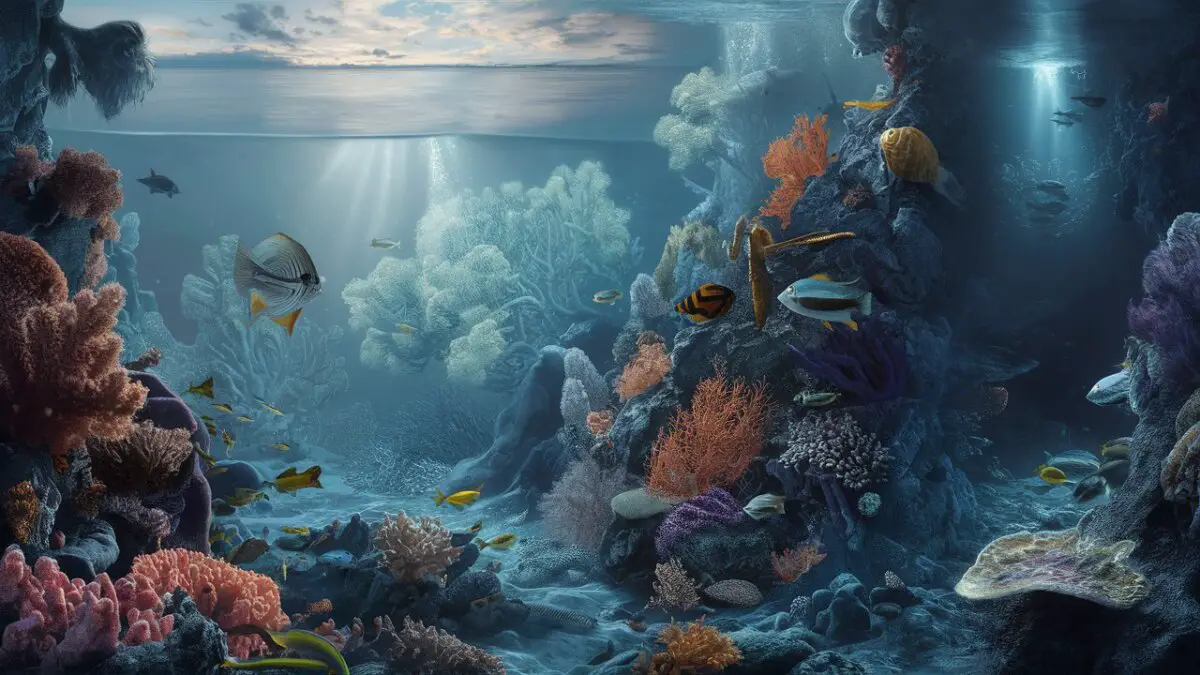
Deep Ocean Environmental Challenges
Earth’s last frontier, the deep ocean, is still mostly uncharted and enigmatic.
Even though it makes up the bulk of the planet’s livable space, it needs our attention since it is facing extraordinary environmental concerns.
There is a threat to the fragile equilibrium of the deep ocean ecology as human activities continue to intrude into these depths.
The effects of climate change are one of the main obstacles. Ocean acidification, changing ocean currents, and rising sea temperatures all threaten the complex web of life in these depths.
Because of the unparalleled pace at which their habitats are changing, species that have evolved to survive in stable environments for millennia today face an uncertain future.
Pollution is yet another urgent problem. Marine life is threatened by plastics, chemicals, and heavy metals that make their way into the deep ocean.
The gradual breakdown of plastics and the build-up of poisons in deep-sea species may have repercussions that spread up the food chain.
Furthermore, when shallower fisheries become exhausted, overfishing has spread into the deep ocean.
Particularly for fragile ecosystems, uncontrolled deep-sea trawling produces disastrous effects that make recovery difficult or impossible.
To tackle these obstacles, a coordinated endeavor is necessary. Establishing and enforcing laws that safeguard the deep ocean requires international cooperation.
In order to inform sustainable behaviors, scientific research and technology advancements must offer insights into these ecosystems.
The deep ocean, though often out of sight, must not be out of mind. By understanding and addressing the environmental challenges it faces, we can ensure the preservation of this vital and awe-inspiring realm for generations to come.

Conclussion
To sum up, the ocean’s depths continue to be a fascinating mystery, holding mysteries that pique our curiosity and motivate scientific research.
Discovering the depths exposes an amazing universe, and our Top 5 Secrets just scratch the surface of the ocean’s secrets.
The deep sea captivates us with the appeal of the unknown, revealing previously undiscovered animals with fascinating adaptations and ancient underwater landscapes that rewrite Earth’s past.
In addition, the ocean’s depths are essential for maintaining biodiversity and controlling the planet’s temperature.
As we uncover these mysteries, we will learn more about the interconnectedness of life on Earth and be better able to guide conservation efforts.
The search for the secrets of the ocean is still ongoing, and every new finding adds to our understanding and emphasizes how crucial it is to protect this delicate environment.
Permit the investigation to continue as we work to uncover the great secrets that lie beneath the surface.
Hooked on Tech: Exploring the latest Fishing Gadgets that Anglers swear by.
In the realm of angling, where tradition and technology often converge, a new wave of fishing gadgets has emerged, transforming the way anglers approach their craft.
From advanced fish finders to smart bait systems, these innovations have not only revolutionized the fishing experience but have also garnered a loyal following among anglers worldwide.

